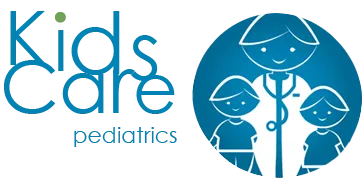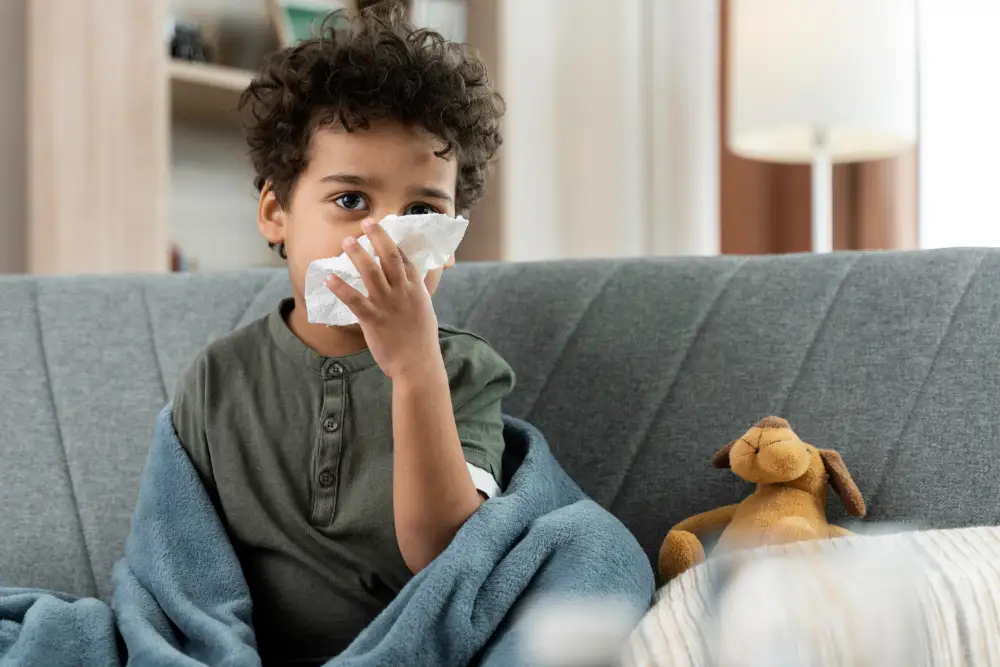Seasonal changes bring more than just falling leaves and warmer days. They often come with unexpected sneezes, itchy eyes, and runny noses, especially for kids. If you are looking for ways to help your child deal with seasonal allergies, you are not alone. There are several ways available to help a child with seasonal allergies naturally, without relying on harsh medications.
In this piece, we will discuss what seasonal allergies are, symptoms of seasonal allergies, and natural ways to manage kids’ seasonal allergies.
What are Seasonal Allergies in Children?
Seasonal allergies in kids, also known as hay fever or allergic rhinitis, is a reaction of the body’s immune system to certain allergens. Allergens such as pollen, mold, grass, dust, and other tiny particles in the environment can trigger this condition. These allergies typically occur during changing seasons, summer, or early fall.
Children sensitive to these allergens show various symptoms, including sneezing, a runny nose, itchy eyes, or an irritated throat. Over time, if left untreated, these allergens can affect their energy, sleep quality, and even overall performance in extracurricular activities.
Symptoms of Childhood Seasonal Allergies
To come up with a reliable allergy treatment plan, it’s essential to spot the seasonal allergy symptoms in kids early. Here’s a list of symptoms to recognize that can help parents take prompt action.
- Frequent sneezing
- Runny or congested nose
- Itchy or watery eyes
- Scratchy throat or dry cough
- Dark circles under the eyes
- Irritability or fatigue
- Worsening of asthma symptoms
Natural Ways to Help Your Child with Seasonal Allergies
Prevention is the best cure for seasonal allergies. When looking for ways to help your child with seasonal allergies, natural avoidance is the best way. Additionally, other options to tamp down the sniffles and body rashes begin by making small but impactful lifestyle adjustments.
Household Changes
Your home is the place where your kids are going to spend most of their time. Maintaining an allergen-free environment can reduce your child’s exposure and risk of seasonal allergies significantly. A few changes you can implement to create an allergen-free environment include:
Keep Windows Closed and Use HEPA Filters
Try to keep your windows closed as much as you can. Keep pollen outdoors by shutting windows and doors during high-pollen seasons. Consider using a HEPA filter vacuum cleaner to trap dust, pollen, and pet dander.
Air Filters
Invest in HEPA-certified air purifiers for bedrooms and living areas to reduce allergens in indoor air.
Air Conditioners and Dehumidifiers
Proper use of your AC and dehumidifier can help prevent mold growth. Cool, dry air discourages dust mites and mold, two major allergy triggers.
Shower and Change Clothes After an Outdoor Activity
Consider taking a shower, changing clothes, and washing hands immediately after playing outdoors. These habits will help your child stay away from pollen clinging to their hair, skin, or clothing.
Allergy-Reducing Diet to Control Seasonal Allergies
In addition to household changes, a healthy diet plays a vital role in managing seasonal allergies in kids naturally. Be sure to add the following foods and supplements to your child’s diet, strengthening their immune response:
Honey
Local raw honey (safe for children over 1 year) may help build tolerance to local pollen over time.
Butterbur (Petasites hybridus)
A plant-based remedy with antihistamine effects. Ensure it’s labeled “PA-free” before use.
Bromelain
An enzyme in pineapple that reduces sinus swelling and helps with nasal congestion.
Acupuncture
Gentle pediatric acupuncture can reduce histamine response and allergy discomfort.
Probiotics
A healthy gut always boosts overall immunity. Support gut health with probiotics like yogurt or supplements containing Lactobacillus strains.
Quercetin-Rich Foods
Apples, onions, and leafy greens are packed with quercetin, a natural antihistamine and anti-inflammatory compound.
Vitamin C Supplements
Vitamin C lowers histamine levels, which helps control the frequent recurrence of allergy symptoms. Add oranges, bell peppers, and strawberries to your child’s meals or use chewable supplements.
Spirulina
This blue-green algae can reduce symptoms of allergic rhinitis when taken consistently.
Peppermint Oil
Inhalation or diluted topical use of peppermint oil helps relieve nasal congestion and soothe breathing.
Saline Nasal Rinses
Saline nasal treatments at home are effective in clearing mucus, allergens, bacteria, and other irritants from the sinus cavities. Safe and effective for kids, saline rinses help clear the nasal passages of allergens.
Encourage Hydration
Staying well-hydrated helps thin mucus and flush out allergens from the body.
When to Consider Allergy Testing for Kids
In case of repetitive, unexplained symptoms that persist or get worse, it’s time to consider allergy testing for kids. A proper diagnosis helps pinpoint specific allergens and shape a long-term management plan.
Allergy Test for Kids: What to Expect
In-clinic allergy tests for kids involve either a skin prick test or a blood test to identify allergens. Both tests are safe and quick, and they generally provide reliable results.
Conclusion
Managing seasonal allergies in kids doesn’t always require a prescription. With the right combination of natural remedies, dietary choices, and household adjustments, you can dramatically improve your child’s and family’s quality of life.
But if symptoms persist or interfere with daily activities, don’t hesitate to explore allergy testing for kids or consult your pediatrician. Every child is unique, and what works for one may need to be customized for another.
FAQs
How to know if my child is allergic or just has cold symptoms?
The major difference between seasonal cold and seasonal allergy is that colds are short-lived and may come with a fever. Seasonal allergies, on the other hand, last longer and include symptoms different from seasonal colds, including itchy eyes, sneezing, and recurring symptoms during the same time every year.
How much does a child’s allergy test cost?
Depending on your provider, location, and type of test, the child allergy test cost varies. It can typically range between $100–$300.
What is the Best Allergy Testing Kit for Kids?
At-home options are available for mild allergy checks. The best allergy testing kit for kids usually includes a finger-prick blood sample test, offering results in just a few days.

